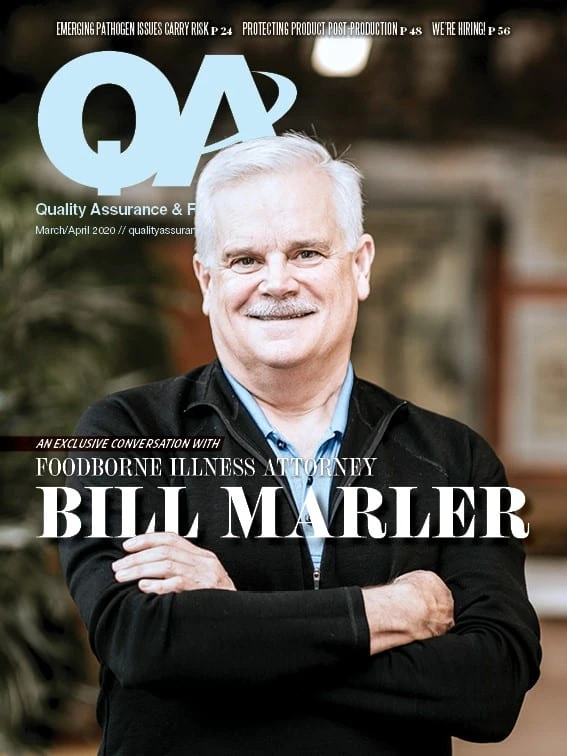
Although outsourcing pest control service is much more expensive (averaging $1,700 per month for survey respondents) than purchasing pesticides for internal use (averaging $336 per month), 91% of the survey respondents choose to outsource some or all of their pest control (Figure 11).
It is likely that this is due, at least in part, to the seriousness and risks of pests in food facilities from both a reputational and regulatory perspective. As noted in Figure 8 (page 5), the FSMA increased the pest control requirements for food processing and handling facilities. Specifically, the CGMPs of the Preventive Controls Rule state: “Effective measures must be taken to exclude pests from the manufacturing, processing, packing and holding areas and to protect against the contamination of food on the premises by pests.”
While there are standard exclusion measures that facilities can implement for prevention (such as those in the IPM article, page 7), pests often find a way to get in despite one’s best efforts. Monitoring for such intrusion, inspecting for conducive conditions, identifying pest presence, and understanding pest behavior to recommend and implement the best possible preventive or corrective action requires an expertise and knowledge that few facility workers will have.
Additionally, if chemicals are needed, the applicator will likely need to be licensed and certified, with continuing education credits generally required for renewal. This is because of the knowledge required for both application and food processing facility approved uses. For example, insect growth regulators (IGRs) disrupt the insects’ normal development, preventing reproduction, egg-hatch, and molting from one stage to the next. These can be well-suited for treatments in areas where spraying isn’t acceptable and can provide up to 90 days of control, but it is critical that the IGR is correctly and safely applied.
Thus, while the expense of outsourced service may seem, at first glance, to be higher, the related costs, and risks, of attempting to do it oneself, can be more costly in the long term.
Whether in-house or outsourced, most facilities (61%) are serviced weekly, with another 33% being serviced monthly. Only 2% are serviced quarterly or on an as-needed basis, while only 1% receive daily service. On the interior of food facilities, pest control methods most frequently used are traps, bait, and residual treatments; on the exterior, perimeter sprays and baits are most common (Figure 12).
But no matter who is doing the service, how often it is being conducted, and what methods are being use, the cockroach control efforts seems to be working. The vast majority (92%) of respondents to QA’s 2020 State of the Market: Cockroach Control in Food Facilities said they feel their facility’s cockroach control program has been successful and the money well spent. ?


Get curated news on YOUR industry.
Enter your email to receive our newsletters.
Explore the March April 2020 Issue
Check out more from this issue and find your next story to read.
Latest from Quality Assurance & Food Safety
- Q&A: Sandra Eskin Leads Food Safety Advocacy Organization, STOP, as CEO
- STOP CEO Eskin on Government Layoffs, Challenges in Food Safety
- Mission Barns Announces Cell-Cultivated Pork Fat Launch Following FDA Clearance
- Hearthside Food Solutions Recalls Breakfast Sandwiches Due to Undeclared Allergen
- Walker’s Wine Juice Recalls Pumpkin Juice Due to Botulism Risk
- The Cascading Food Safety Impacts of Tariffs on the Food Industry
- Tyson Ventures Calls Startups to Apply for Tyson Demo Day
- Student Finalists Selected for IFT Product Development Competitions






